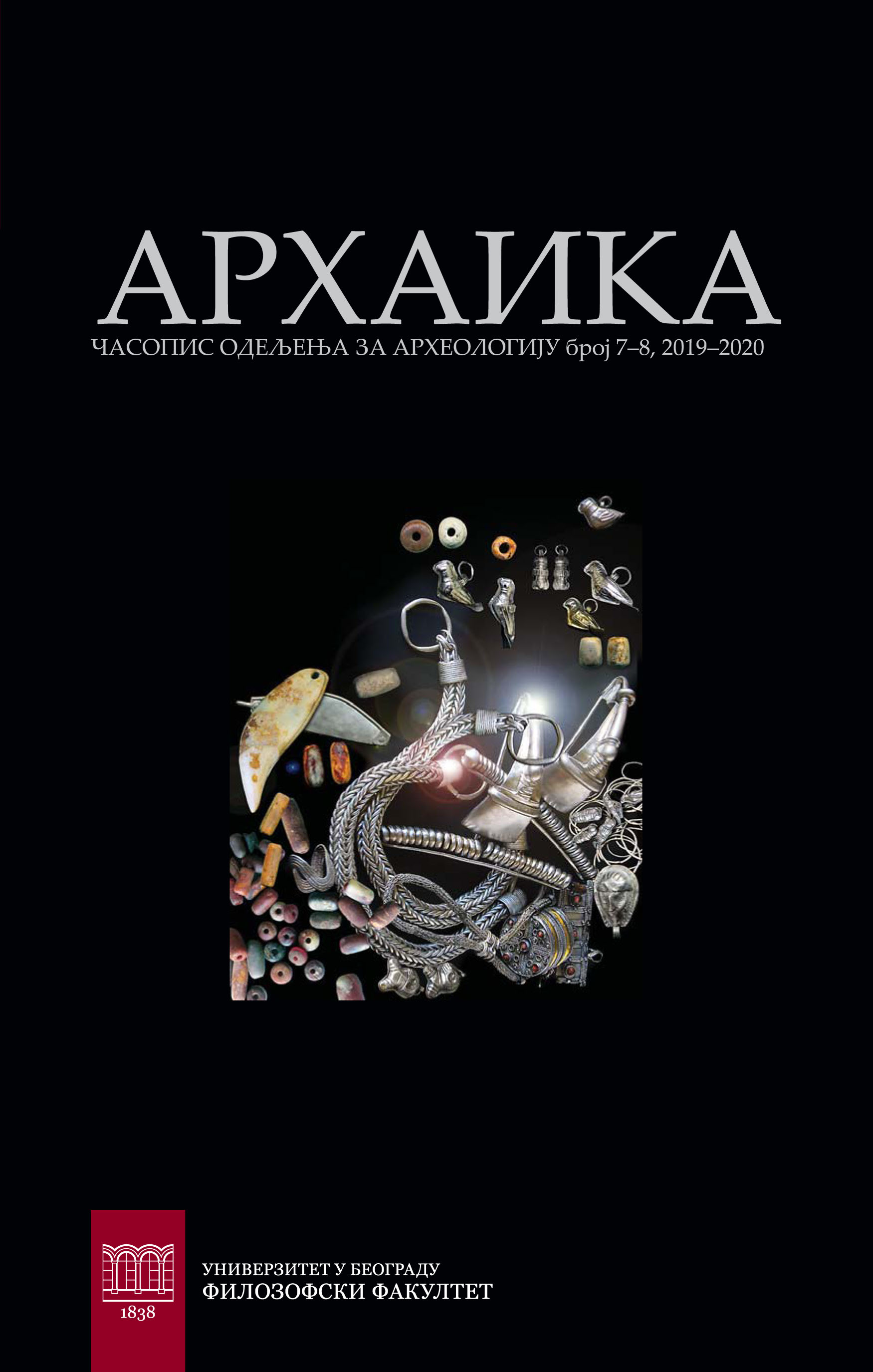Нови прилог проучавања дубовачко-жутобрдске антропоморфне пластике
New contribution to the study Dubovac-Žuto Brdo anthropomorphic plastics
Author(s): Jovan, D. MitrovićSubject(s): Archaeology
Published by: Филозофски факултет, Универзитет у Београду
Keywords: Dubovac–Žuto Brdo–Gârla Mare Culture; anthropomorphic plastic; Bronze Age of Serbia; Livade – Mala Vrbica site; Golubac fly
Summary/Abstract: A characteristic of the Dubovac – Žuto Brdo – Gârla Mare Bronze AgeCulture (Br C1–Ha A1) is its ceramic objects. The best-known examples areceramic vessels and figurines whose shapes, ornamental compositions, andtechnical attributes are distinctive of the Bronze Age period in the Vojvodinaand Danube region. Over 190 anthropomorphic figurines were discoveredacross 60 archaeological sites in Serbia.The figurine in question was discovered in 1981 in the site Livade, nearthe village Mala Vrbica, during the archaeological excavation related to theconstruction of a hydroelectric plant named Đerdap II. One of the vividornaments on the figurine depicts how people of certain status may havedressed, however these ornaments may not be a real depiction. Most likely, theapplied motif had a decorative effect, such as a textile on the costume. Even still,the most interesting ornament is an insect, endemic from the Danube meanderterritory in Ključ located on top of the figurine’s head. The artistic depiction ofthe insect represents, мost likely, a mature example of Golubac Fly (lat. Simuliumraptans golubacense). The Golubac Fly is relatively well known because it’s bitespread the onchocerciasis (lat. Onchocerciasis) disease (also known as a riverblindness) to animals and humans in this territory during the 19th and the firsthalf of the 20th century. In 1960s and 1980s, the construction of the Đerdapdame levated the Danube’s water levelsand reduced water velocity causing theGolubac Fly’s population to decline to the small numbers observed today.The insect ornament on the figurine raises numerous interesting questions.Did the Golubac Fly make everyday life difficult to the Bronze era inhabitantsin Đerdap? Most likely it did. We can only guess the amount of animal andhuman pestilence and how people at that time tried to prevent it. Perhaps thefigurine with the „Golubac Fly” depiction may have served as a lucky charmfor protection against this miniature flying peril. Or maybe it was made as agrave contribution (memento) for someone who died from such insect bite? Inany case, without raising new questions and relying on new sources from otherscientific disciplines, science limits itself by repeating the same matrix.
Journal: Архаика
- Issue Year: 2019
- Issue No: 7-8
- Page Range: 29-42
- Page Count: 29
- Language: Serbian

